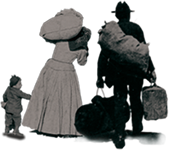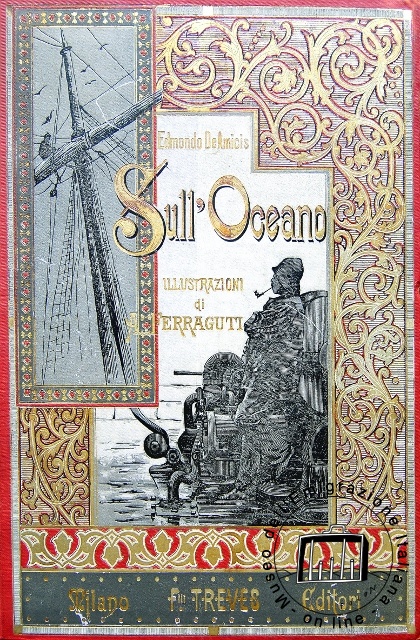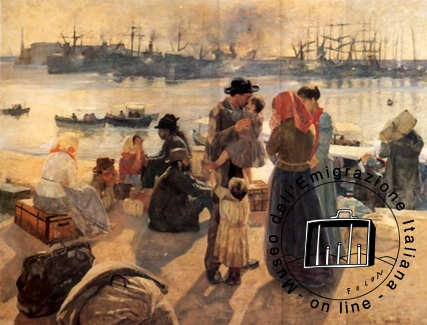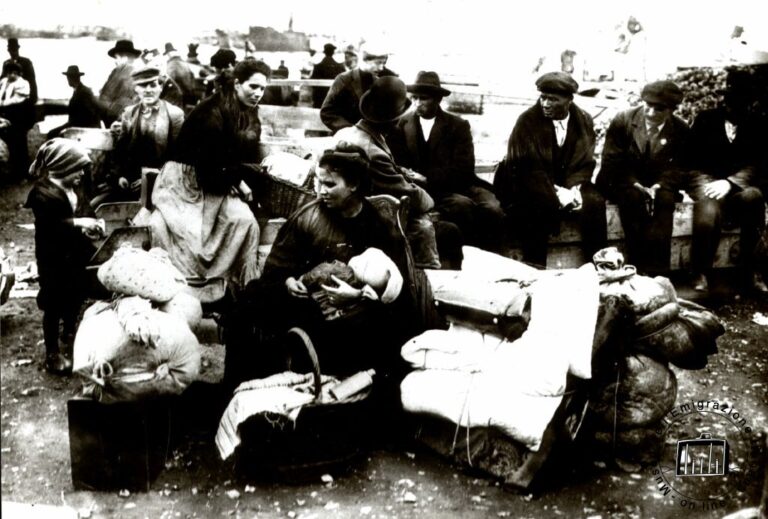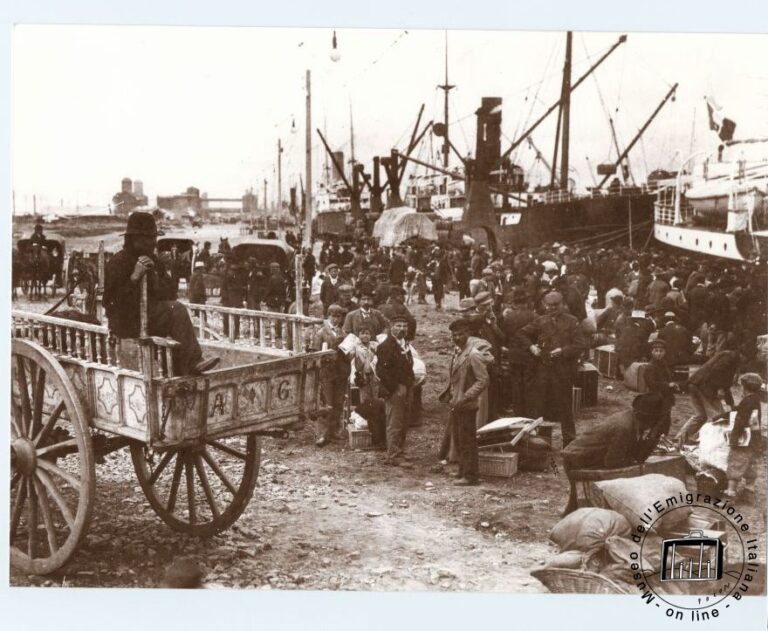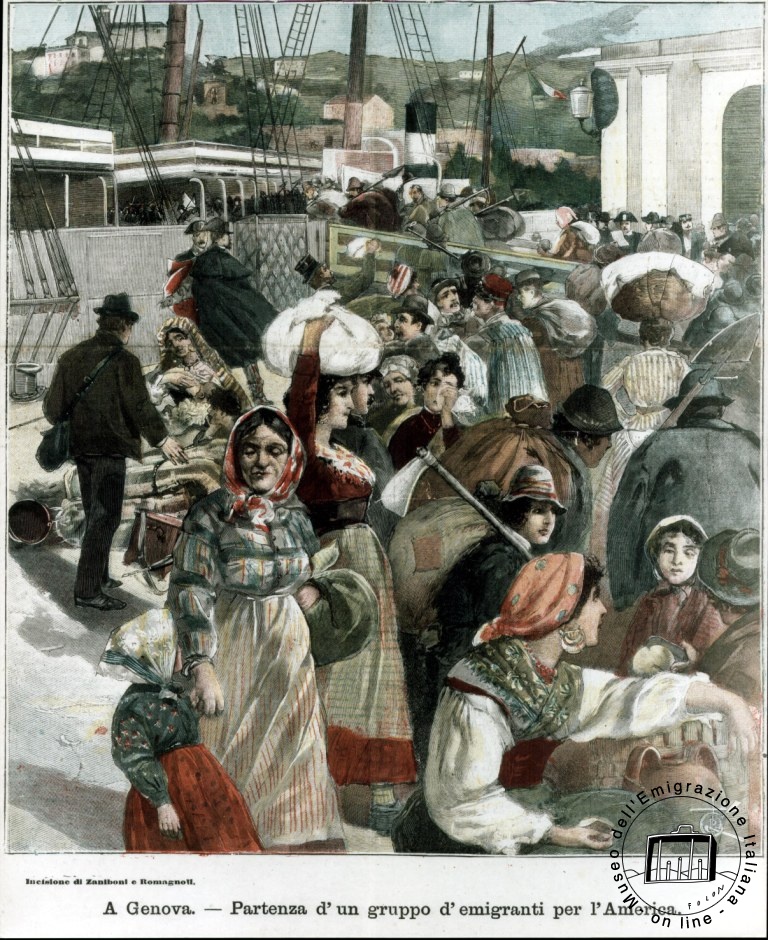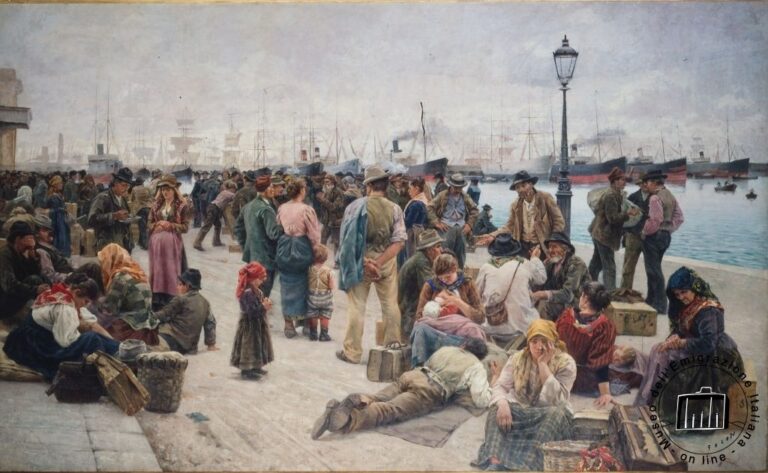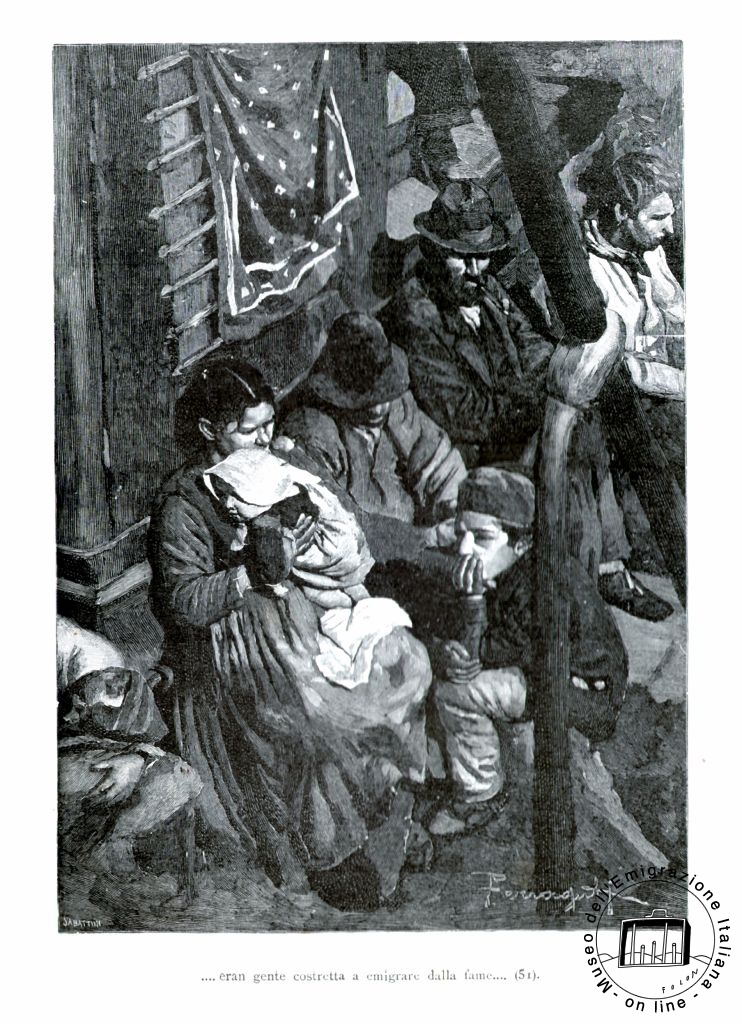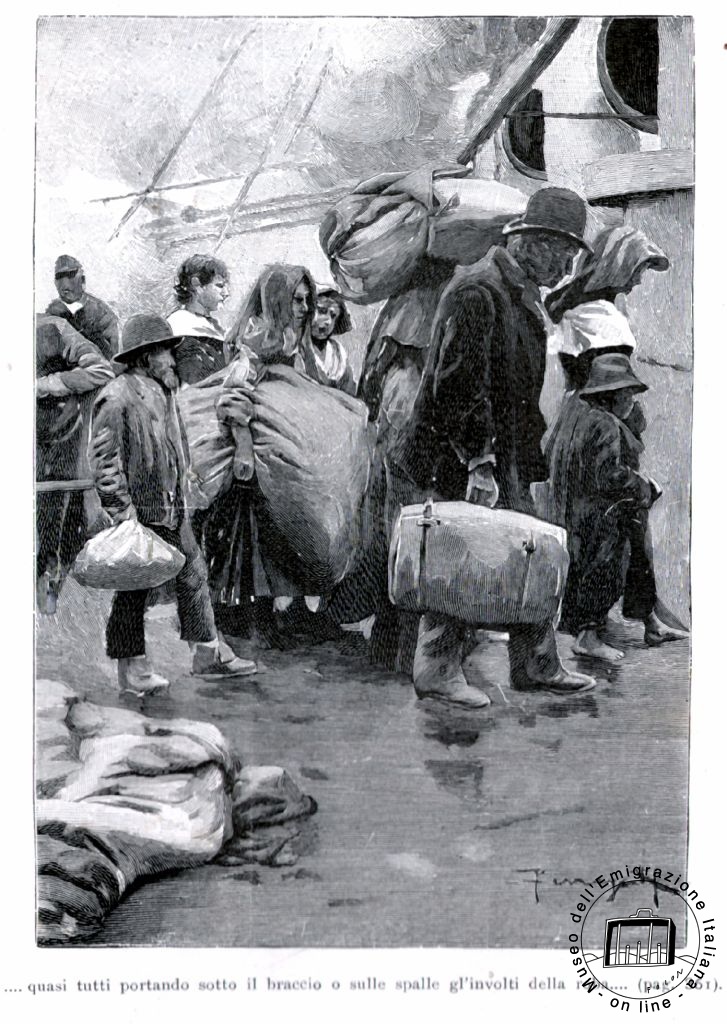Emigration between art and literature. On theOcean by Edmondo De Amicis illustrated by Arnaldo Ferraguti
In a famous letter to his brother Giuseppe dated Oct. 28, 1891, Gaetano Previati lashes out forcefully against "the imbecility" of the verista current of illustration, attacking those artists "who "where the writer for example incidentally says and, the fellow, having taken his hat went away - make their good drawing of the character with the hat in his hand half turned between the exit door. And a little later, condemning the abuse of photography "impudently gabellated as art to the naiveté of the good public," he takes as an example Arnaldo Ferraguti, author in his own words of that "minchionatura of illustration of De Amicis's Amici and the other mystification of Oceano."
The date of the letter is significant: 1891 is the year of the First Brera Triennial Exhibition, where Arnaldo Ferraguti himself receives the Fumagalli prize of "encouragement for young people," while Previati presents Motherhood getting no recognition. It could also be a simple controversy poisoned by competition for audiences and success, but in fact behind this dispute can be read the debate around the evolution of the arts in Italy, which precisely in those years was coming to a head, touching also on the decisive point of the use of photography by artists.
Thus, the book, starting from nineteenth- and twentieth-century artistic controversies, takes into analysis precisely the novel On the Ocean by Edmondo De Amicis, illustrated in 1890 by Arnaldo Ferraguti on commission from the publisher Emilio Treves, who had decided in 1889 to send the artist to retrace the journey from Genoa to Buenos Aires made by De Amicis in 1884, in order to illustrate his novel, which at the time of its first release had been reprinted ten times in just two weeks. Due to this very high approval rating, the publisher had decided precisely to embellish the 1890 publication with drawings by the publishing house's most skilled artist.
Ferraguti recalls the whole affair in the article On the Ocean after Edmondo De Amicis, written on the occasion of the Piedmontese writer's death in 1908 and published in "Il Secolo XX." Ferraguti recounts that to try to stop figures and situations in the novel he had brought along brushes and pencil, but above all the camera, which becomes the protagonist of the early days. In fact, he faces both the resistance of first-class travelers, reluctant, "For human self-love" to be portrayed, so much so that the camera spread "such terror that if modern machine guns routed the enemy as I routed "class passengers" with my harmless and modest weapons, there would be no more carnage!...", both the far more somber thoughts of third-class passengers, who "at the appearance of the lens, they would cautiously run away, and several others at the click of the shutter, would deliberately turn their ... backs to me. [...] - Shah believe me, - the commander told me one day, - in all the cáreghi there is always a good dozen among murderers, thieves or simple evildoers who have escaped justice, and many others who having already had to deal with them... prefer... to take a breath of air. You will see that past the tropics, even the most reluctant, assuming they have reached the zone of impunity, will become confident. The arcane was explained!".
What emerges is the naturalist painter's desire to conduct scrupulous photographic documentation from life, from which he then drew inspiration for his own compositions. The illustrations thus encompass both a figurative-artistic and a social value, dealing with themes dear to contemporary Italian naturalism. In this vein, Ferraguti is in excellent company: suffice it to recall famous editions such as the Civil strife by De Amicis illustrated on several occasions by Crotta, Melis, Vannucci, The four seasons By De Marchi with drawings by Luigi Rossi, Underground Florence by Jarro illustrated by Fabio Fabbi, but also the Canto Novo by D'Annunzio illustrated by Michetti in 1882. It is highly significant, as mentioned in the introduction, that the great development of photography at the end of the 19th century corresponds in literature to the editorial fortune of writers of the literary current of verismo, from Fucini to Jarro and again to Zola, Daudet, Verga, and Carolina Invernizio.
The present volume, always keeping in mind that the different tool used, the photograph or the brush, is also a sign of a different mental approach to figuration, proposes, by virtue of this strong interpenetration between photography, pencil, faithful re-presentation of reality and interpretation of the same, to compare sources of different nature: from coeval documentary-photographs, to newspaper covers, to pictorial and sculptural works of art, always keeping clear the concept that we are dealing with different semantic levels, which nevertheless in the case of periodicals and the novel reveal numerous points of tangency.
Different planes are thus interwoven, placing side by side the history of art and the history of literature, the formal analysis of images and their dialogue with photographic reproductions of the time, comparing unpublished materials and sources, both at the level of iconography and memoir (diaries of emigrants of the time preserved at the Cresci Foundation), thus bringing a new contribution to the study of the massive phenomenon of Italian emigration between the nineteenth and twentieth centuries.
GIORGIO BACCI, Emigration between art and literature. On the Ocean by Edmondo De Amicis illustrated by Arnaldo Ferraguti, "Quaderni della Fondazione Paolo Cresci per la storia dell'emigrazione italiana," Lucca, Tipografia Tommasi, 2008.

